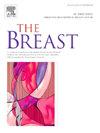Multiple dimensions of the quality of life among Asian American breast cancer survivors: The impact of a technology-based program
IF 5.7
2区 医学
Q1 OBSTETRICS & GYNECOLOGY
引用次数: 0
Abstract
Objective
The purpose of this study was to examine if a technology-based information and coaching/support program could improve the quality of life of Asian American breast cancer survivors and determine the factors that influenced the changes in the women's quality of life by the technology-based program.
Methods
This was a randomized controlled trial with 199 Asian American breast cancer survivors (104 in the intervention group and 95 in the control group). Multiple instruments including the Functional Assessment of Cancer Therapy Scale-Breast Cancer (FACT-B) were used to assess background factors, disease factors, and the quality of life. The data were analyzed using intent-to-treat general linear models.
Results
The FACT-B total and subscale scores of the intervention group increased from pre-test (T0) to post 3-months (T2), while those of the control group decreased. Significant interaction between time and group were found only in physical well-being (β = 0.84, p = .025) from T0 to T1 (post 1-month) and social well-being (β = 1.05, p = .006) from T0 to T2 within the mixed-effect model with AR1. The PRQ scores mediated the effect of the technology-based intervention on the Breast Cancer Subscale scores (p < .05) over one month (T0 to T1).
Conclusion
The technology-based program improved physical and social well-being among Asian American breast cancer survivors. Social support mediated the impact of the program on the quality of life. Future studies are needed on different dimensions of the quality of life with diverse groups of survivors. NCT02803593.
亚裔美国乳腺癌幸存者生活质量的多个维度:基于技术的项目的影响
目的探讨以技术为基础的信息和指导/支持计划是否能改善亚裔美国乳腺癌幸存者的生活质量,并确定影响技术为基础的计划改变妇女生活质量的因素。方法199例亚裔美国人乳腺癌幸存者(干预组104例,对照组95例)进行随机对照试验。包括肿瘤治疗功能评估量表-乳腺癌(FACT-B)在内的多种工具被用于评估背景因素、疾病因素和生活质量。使用意向治疗一般线性模型对数据进行分析。结果干预组的FACT-B总分和分量表得分从测试前(T0)到测试后3个月(T2)均呈上升趋势,对照组则呈下降趋势。在AR1混合效应模型中,时间和组之间仅在T0至T1(1个月后)的身体幸福感(β = 0.84, p = 0.025)和T0至T2的社会幸福感(β = 1.05, p = 0.006)存在显著的交互作用。PRQ评分介导了技术干预对乳腺癌亚量表评分的影响(p <;.05)在一个月内(T0至T1)。结论以技术为基础的项目改善了亚裔美国乳腺癌幸存者的身体和社会福祉。社会支持在项目对生活质量的影响中起中介作用。未来需要对不同幸存者群体的生活质量的不同维度进行研究。NCT02803593。
本文章由计算机程序翻译,如有差异,请以英文原文为准。
求助全文
约1分钟内获得全文
求助全文
来源期刊

Breast
医学-妇产科学
CiteScore
8.70
自引率
2.60%
发文量
165
审稿时长
59 days
期刊介绍:
The Breast is an international, multidisciplinary journal for researchers and clinicians, which focuses on translational and clinical research for the advancement of breast cancer prevention, diagnosis and treatment of all stages.
 求助内容:
求助内容: 应助结果提醒方式:
应助结果提醒方式:


